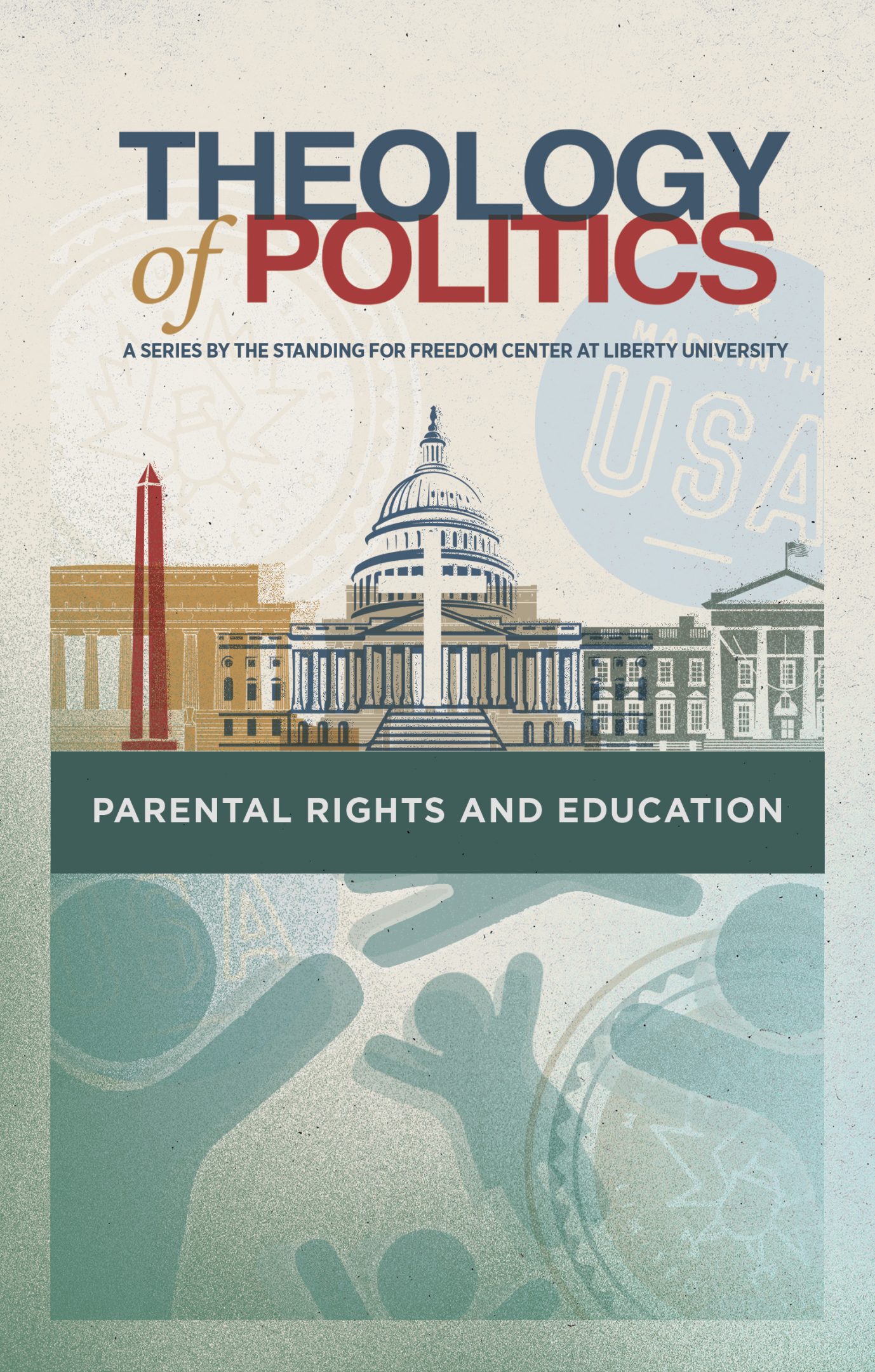


Get a free copy of Parental Rights & Education when you subscribe to our newsletter!

Like clockwork, yet another report has come out showing that large majorities of Americans across every possible demographic believe that students should have the opportunity to attend the school that is best for them regardless of where a child lives or how much money his or her parents have.
As the nation faces sharp divisions, polling consistently shows that there is one thing that Americans of all ethnicities, political affiliations, ages, and other demographic groups agree on: An overwhelming percentage of Americans want school choice.
Take, for example, the recent Voters’ Voice Poll, which asked 2,560 registered voters their views on a variety of election-related subjects. On virtually all of those issues, the answers show wide gaps along typical demographic breakdowns.
But not school choice. It is the only issue facing Americans that blows up polling conventional wisdom and draws great support from every conceivable demographic. Yet that, in and of itself, has become a polling trend one can count on.
Like clockwork, polls continually show that about 70 percent of those polled support school choice.
The Voters’ Voice Poll was no different.
The poll, which had a margin of error of plus or minus 2 percent, showed that 68 percent of those questioned said they support a federal tax credit that would allow parents to send their children to the school of their choice, including to private school. Only 20 percent said that children should attend the schools they are assigned to attend, which means according to zip code.
The interesting information comes from the statistical breakdown by demographic. Critics of school choice always argue that it will harm lower income, urban, rural, and racial minority students while benefiting white and higher income students; yet the poll shows that it is the families who would supposedly be hurt the most who are the biggest supporters of school choice.
While 66 percent of whites say they are in favor of federal tax credits and 22 percent said students should attend the school to which they are assigned, 76 percent of both black and Hispanic voters said they favor the policy. Only 15 percent of black and 12 percent of Hispanic voters said that students should attend their assigned school.
Meanwhile, 70 percent of respondents with an annual household income below $50,000 supported school choice while the highest income bracket at over $100,000 was the least supportive at 66 percent. And 74 percent of urban and 71 percent of rural voters favored the tax credit, compared to just only 64 percent of suburban voters.
The poll also shows the interesting finding that 18- to 34-year-olds, typically the most liberal respondents, were in favor of school choice at 76 percent, while those 65 and older were the least supportive at 61 percent.
And in one of the rarest feats in politics, the majority of Republicans, Independents, and Democrats all supported tax credits for school choice. Republicans were the most supportive at 77 percent, Independents the least at 58 percent, and Democrats in the middle at 62 percent.
And yet while this would be unheard of for most issues, it’s par for the course for school choice.
A 2023 survey found that Democrats, Republicans, and Independents had a favorable opinion of both public charter schools and school vouchers that would allow parents to send their children to private school. That same survey found that Asian, black, Hispanic, and white parents all viewed public charter schools and school vouchers favorably with Asian, black, and Hispanic parents all supporting vouchers at 70 percent or higher while white parents supported vouchers at 63 percent.
A 2021 Manhattan Institute survey of adults in metropolitan areas showed that 78 percent of blacks, 74 percent of Hispanics, 70 percent of Asian or Pacific Islanders, and 68 percent of whites all supported giving parents the funding to send their child to the school of their choice. A majority of each also favored creating more charter schools.
A 2024 EdChoice survey of parents and other adults showed that respondents were drastically more likely to support than oppose school choice measures.
This was especially the case when respondents were given more detailed information about each type of school choice policy. EdChoice found that support increased anywhere from 13 to 27 percent when respondents were given a brief description of each type of school choice.
The largest jump was with Education Savings Accounts (ESA). EdChoice said that an ESA “establishes for parents a government-authorized savings account with restricted, but multiple uses for educational purposes. Parents can then use these funds to pay for: school tuition; tutoring; online education programs; therapies for students with special needs; textbooks or other instructional materials; or save for future college expenses.”
Following the description, 71 percent of respondents said they favored ESAs, up from 44 percent prior to the description. Somewhat surprisingly, “liberal” and “Democrat” parents were slightly more likely to favor ESAs than “conservative” or “Republican” respondents, though ESAs maintained wide favorability. Only 10 percent of respondents said they opposed ESAs.
School vouchers also received high support at 60 percent, with “Republican” and “conservative” Americans more likely to favor them and 51 percent of “liberal” and 55 percent of “Democrat” respondents saying that they favored school vouchers.
The support for school choice was even higher among parents in the survey with 75 percent of parents supporting ESAs and 68 percent supporting vouchers.
The overwhelming desire for school choice has translated into states adopting or expanding programs in recent years. Currently, 31 states, Washington, D.C., and Puerto Rico all have some form of private school choice, and 45 states and Washington, D.C. have public charter schools.
In this year’s general election, Colorado, Kentucky, and Nebraska will include ballot questions surrounding school choice, giving residents of those states a chance to not just answer a survey but actually vote on the issue.

States that have implemented school choice have had fantastic results and skyrocketing demand. States that once limited school choice programs to low-income students are starting to expand the program to all or nearly all students, while still giving priority to low-income students.
School choice allows parents who are from working-class families to provide the same educational opportunities for their children as do parents who have higher incomes.
Perhaps the best case for school choice is Arizona. The Grand Canyon State was the first to implement tax-credit scholarships in 1997, and in 2011 it became the first state to enact ESAs. Over the last two decades, Arizona has led the nation in education gains on the National Assessment of Education Progress. The school choice policy led to higher test scores both for the students who left their public school and the students who stayed. In 2022, the state expanded its ESA program to all students and the demand has been high.
Americans cannot agree on anything. We rarely cross the aisle politically or demographically. Yet there is one thing most Americans can unify on: We believe that students should have the opportunity to attend the school that is best for them regardless of where that child lives or how much money his or her parents have.
While opponents claim that school choice will harm public schools, schools which are already failing, many states choose to increase funding for public schools simultaneously with their creation of school choice programs, which are often funded through a separate funding source.
School choice is wildly popular with the people of this country, especially if given the chance to have more information.
The only people with whom school choice isn’t popular are teachers’ unions and those who want to protect public schools and their monopoly on both the funds of taxpayers and the minds of students. It’s high past time we started caring about students and their parents instead of public school systems and unions that believe they are entitled to the status quo.
Americans don’t get a choice whether they want to give their hard earned money to fund ideologically driven and woefully incompetent public schools, and for those who aren’t wealthy, high tax rates help prevent them from sending their child to a better school and making a better life for themselves.
It’s about time we give some of that tax money back to the American people to help their children learn and excel rather than spending it on grift, pet projects, and woke agendas.
If you like this article and other content that helps you apply a biblical worldview to today’s politics and culture, consider making a donation here.

Notifications